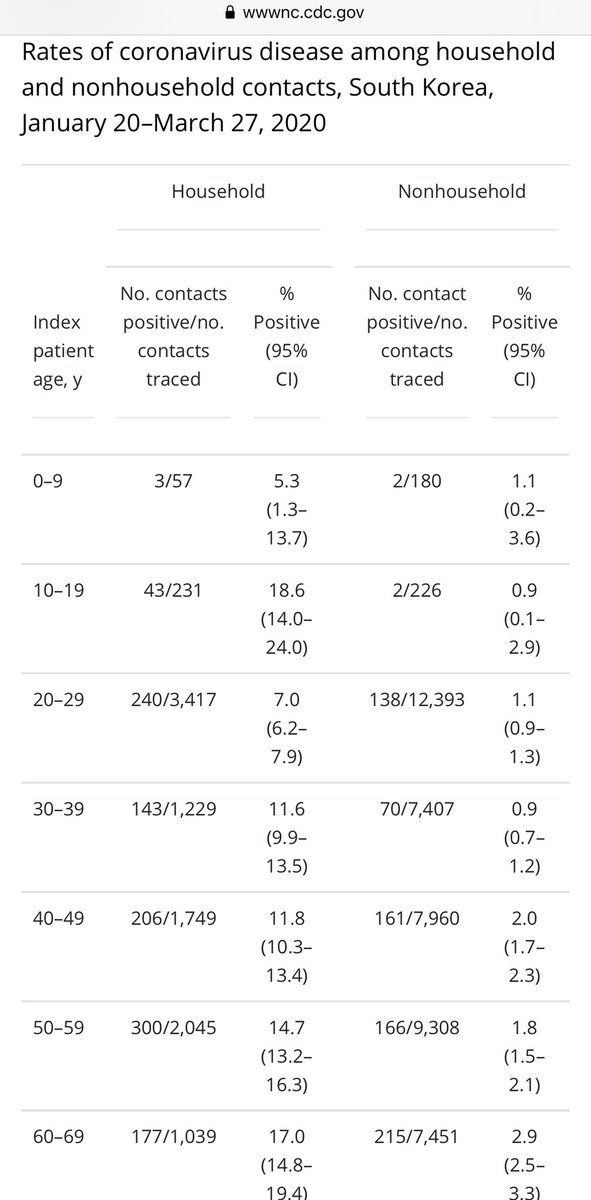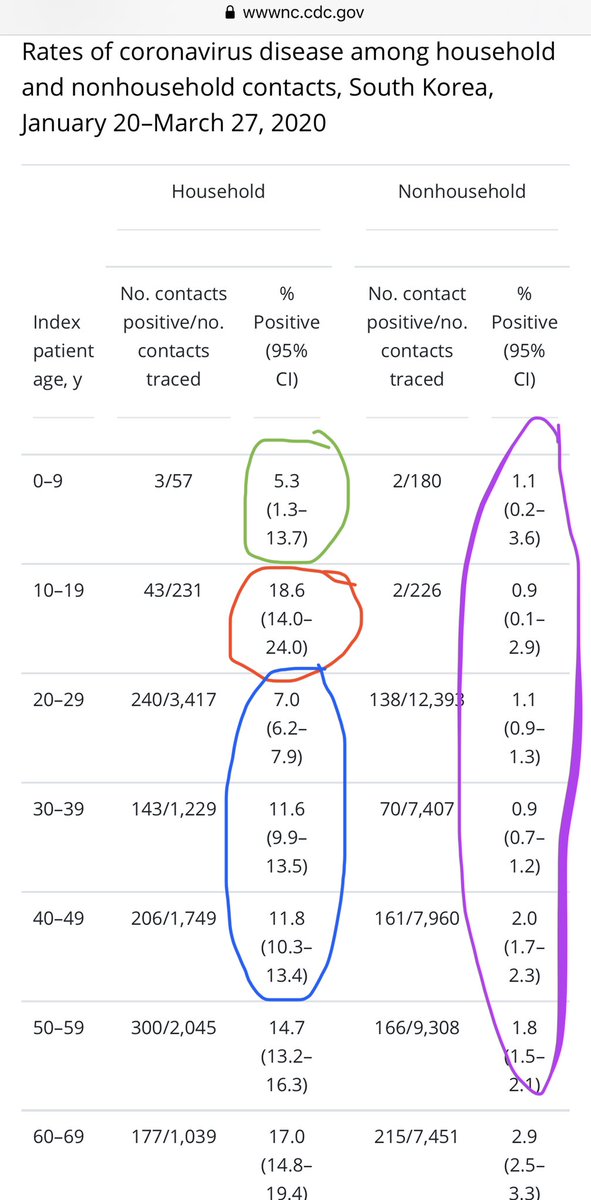KIDS and coronavirus: mega 65000 new  study:
study:
 Kids under 10 transmit virus much less often than adults, but not zero risk.
Kids under 10 transmit virus much less often than adults, but not zero risk.
 Kids ages of 10-19 can spread virus at least as well as adults.
Kids ages of 10-19 can spread virus at least as well as adults. 
 This bodes poorly for school reopenings. #COVID19 https://www.nytimes.com/2020/07/18/health/coronavirus-children-schools.html
This bodes poorly for school reopenings. #COVID19 https://www.nytimes.com/2020/07/18/health/coronavirus-children-schools.html
 study:
study:  Kids under 10 transmit virus much less often than adults, but not zero risk.
Kids under 10 transmit virus much less often than adults, but not zero risk.  Kids ages of 10-19 can spread virus at least as well as adults.
Kids ages of 10-19 can spread virus at least as well as adults. 
 This bodes poorly for school reopenings. #COVID19 https://www.nytimes.com/2020/07/18/health/coronavirus-children-schools.html
This bodes poorly for school reopenings. #COVID19 https://www.nytimes.com/2020/07/18/health/coronavirus-children-schools.html
2) “I fear that there has been this (incorrect) sense that kids just won’t get infected or don’t get infected in the same way as adults. There will be transmission,” Dr. Osterholm said. “What we have to do is accept that now and include that in our plans.”
3) Several studies from Europe and Asia have suggested that young children are less likely to get infected and to spread the virus. But most of those studies were small and flawed, said @ashishkjha, director of @HarvardGH. “It’s one of the best studies we’ve had to date on this.”
4) Results more sobering than I thought: “also found the highest #COVID19 rate (18.6%) for household contacts of school-aged children 10-19, and the lowest (5.3%) for household contacts of children 0–9 yrs in the middle of school closure.” Non-household low because of distancing.
5) also note that index kids aged 10-19 (red) seems to have higher transmission among households than even young adults 20-49 (blue). We know they are different because 95% confidence intervals of red and blue groups don’t overlap. Young kids (green) lowest, but similar to 20-29.

 Read on Twitter
Read on Twitter



